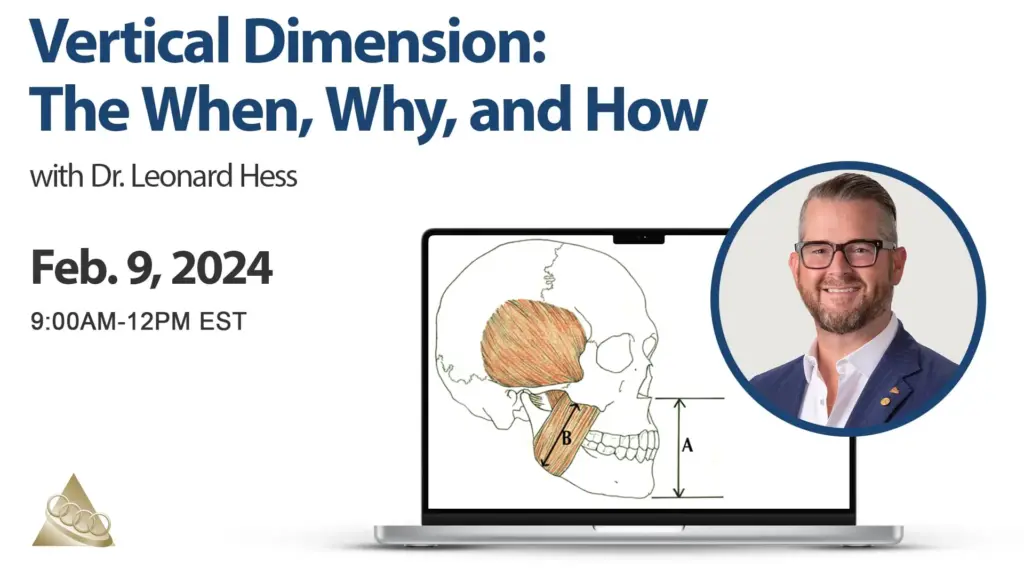Some users may experience temporary issues accessing parts of the site. Thanks for your patience.
- Office Hours Mon - Fri 9:00 am – 4:00 pm EST
This virtual course is accessible on computers, tablets, and smartphones.
When you purchase an individual live stream, you can watch the event live and access the recording for 30 days. This gives you the flexibility to watch at your convenience — whether you miss the live session or want to revisit it later. Watch on any device, anytime, from anywhere in the world.
As a member of All Access+ or the Season Pass, you’ll have ongoing access to the recording for as long as your membership is active.
The goal of this lecture is to aid in understanding the tongue’s role in craniofacial development in early childhood and early adolescence and how that plays into (dys)function as adults. Additionally, the audience should learn practical ways to screen for tongue functional concerns, who, how, and why to refer and empower the practitioner to talk to their patients/parents of patients about tongue functional disorders in a way that is easy to understand so that patients will be encouraged to treat the issue.
Target Audience: General Dentists, Lab Technicians, Specialists
Live Stream Date: JANUARY 19, 2024
Live Stream Time: 9AM-12PM EST
Recording Access: 30 Days for single purchase
CE Credits: (must total 3hrs): #550 (4L)
Instructor: Dr. Danielle Fry
Tuition: $249
Dr. Danielle Fry is a Michigan native and started her career towards orthodontics at Michigan State University obtaining 2 Bachelor’s of Science in Lyman Briggs Human Biology and Lyman Briggs Human Nutrition. She was on the Dean’s list every semester and graduated with Honors and a member of the Honor’s College.
From MSU, Dr. Fry moved out west to the University of Nevada-Las Vegas to go to dental school. Dr. Fry graduated from UNLV with a Doctor of Dental Medicine (D.M.D.) and Magna Cum Laude in 2011. Dr. Fry was on an Air Force scholarship throughout dental school and was Commissioned as a Captain upon graduation and entered Active Duty. Her first assignment was at Wright-Patterson AFB in Dayton OH. She completed a 1 year optional Advanced Education in General Dentistry (AEGD) in which she had intense training in Oral Surgery, Periodontics, Endodontics, Pediatric Dentistry, Oral Pathology, and of course Orthodontics. From Ohio, the Air Force moved Dr. Fry and her husband (also a general dentist) back out west to Mountain Home AFB, ID. Here, Dr. Fry practiced a full range of dentistry for an additional 3 years and found her biggest passion to be Orthodontics. She was accepted into the University of Detroit Mercy’s program which Dr. Fry sought out due to the Roth philosophy being taught and the emphasis the program placed on a stable joint.
Dr. Fry graduated June 2017 and relocated to Petoskey to begin to practice Orthodontics full time. Shortly after, she took her clinical boards in September 2017 – taking 6 of her own cases and passed to become Board Certified by the American Board of Orthodontics! Most recently Dr. Fry finished a certification in Orofacial Pain thru University of Southern California making her dually certified in both Orthodontics and Orofacial Pain. She enjoys treating TMJ pain and helping those wanting to improve their quality of life.

Please contact The Dawson Academy at 1.800.952.2178 for full details.

The Dawson Academy is an ADA CERP Recognized Provider. ADA CERP is a service of the American Dental Association to assist dental professionals in identifying quality providers of continuing dental education. ADA CERP does not approve or endorse individual courses or instructors, nor does it imply acceptance of credit hours by boards of dentistry. The Dawson Academy designates this activity for 4 credit hours continuing education credits.
ADA CERP is a service of the American Dental Association to assist dental professionals in identifying quality providers of continuing dental education. ADA CERP does not approve or endorse individual courses or instructors, nor does it imply acceptance of credit hours by boards of dentistry.
Concerns or complaints about a CE provider may be directed to the provider or to the Commission for Continuing Education Provider Recognition at ADA.org/CERP.